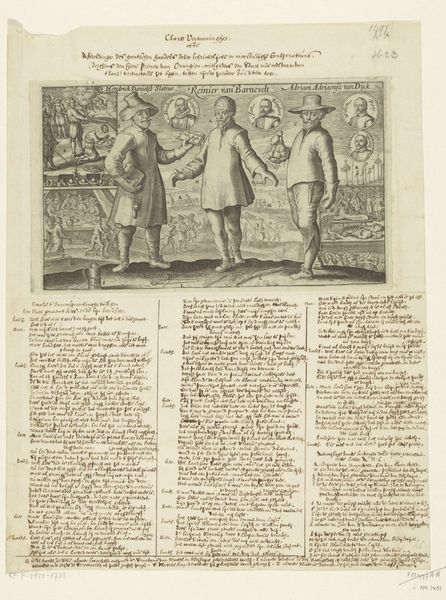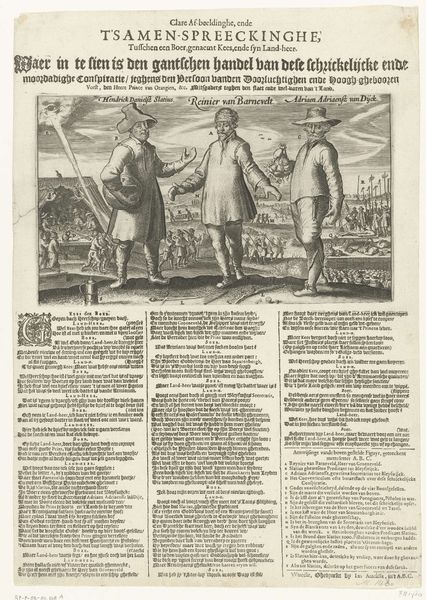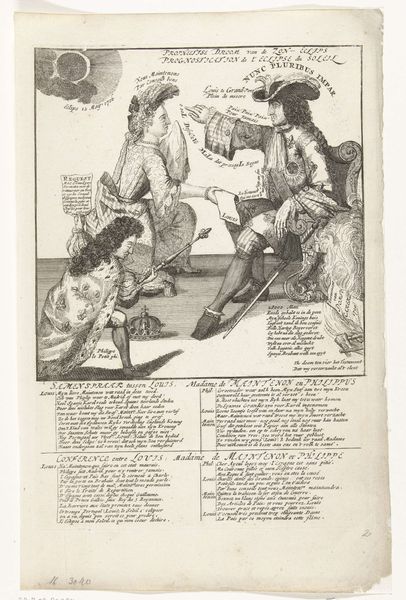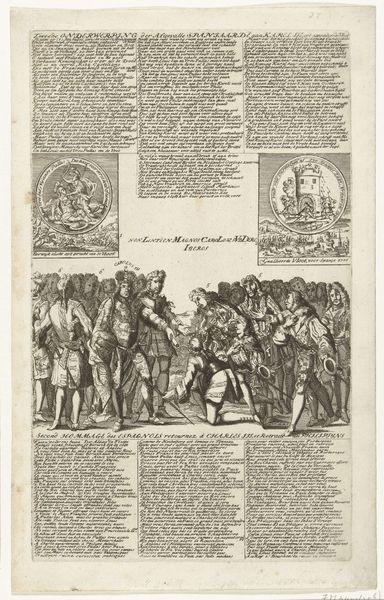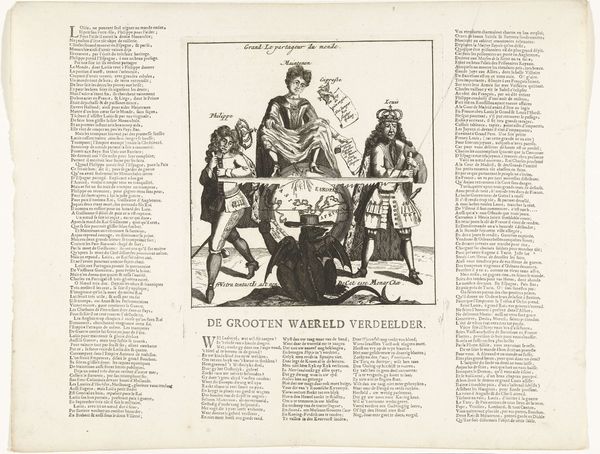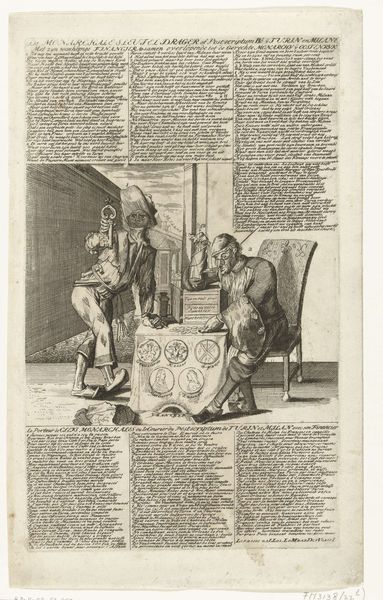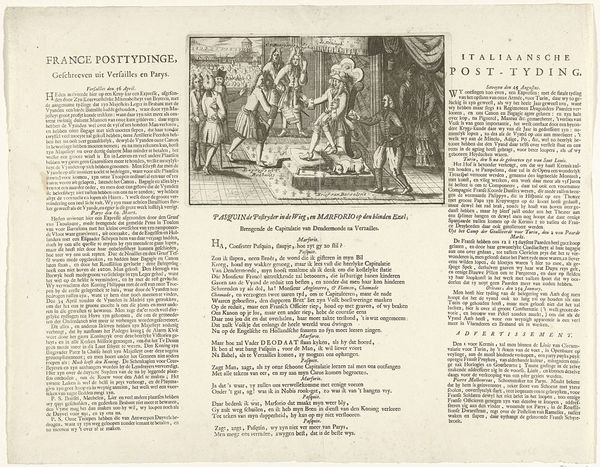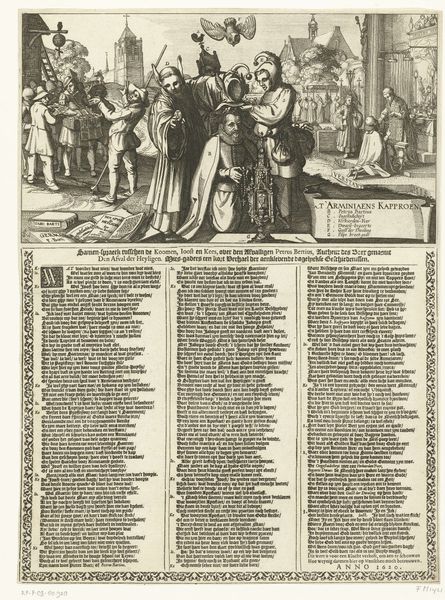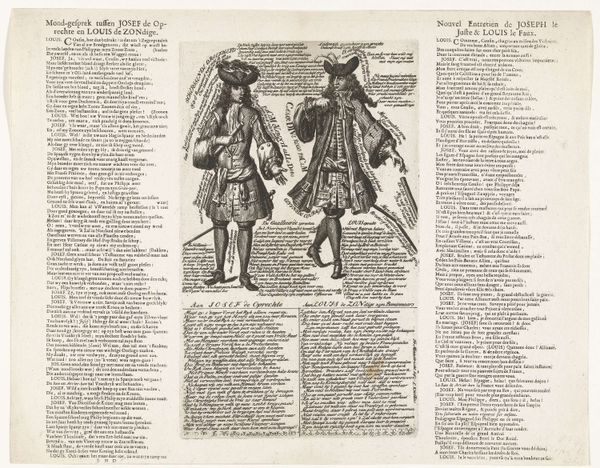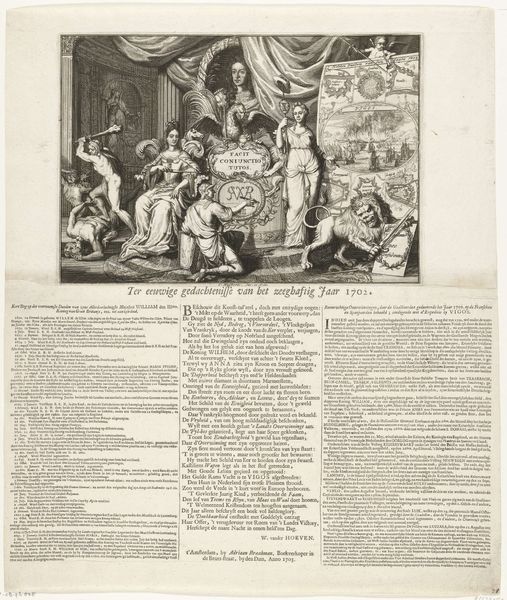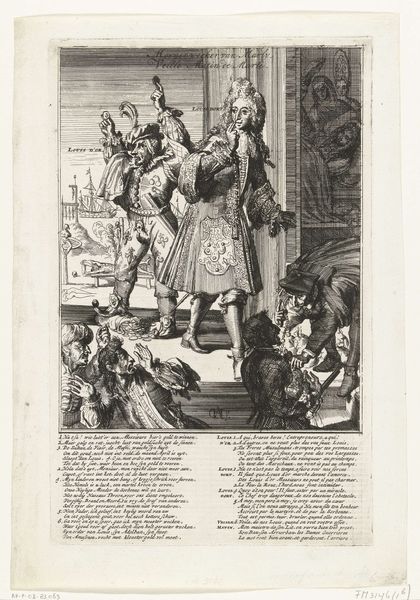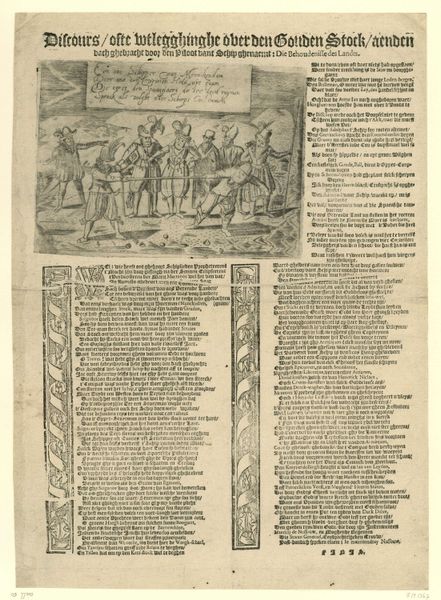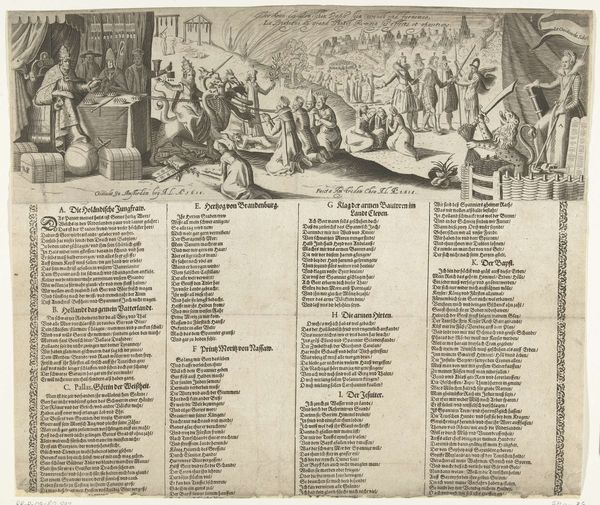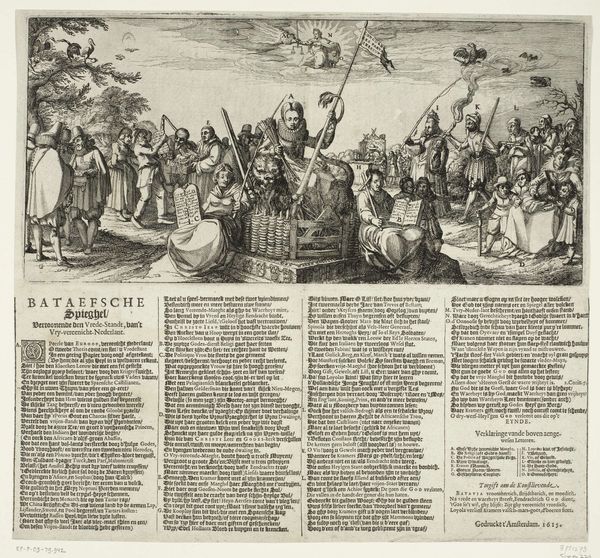
print, engraving
#
portrait
#
narrative-art
#
baroque
# print
#
history-painting
#
engraving
Dimensions: height 400 mm, width 311 mm
Copyright: Rijks Museum: Open Domain
Curator: Here we have a rather compelling print from 1623 entitled "De drie hoofdrolspelers in de samenzwering tegen Maurits, 1623", which translates to "The Three Main Players in the Conspiracy Against Maurice". Editor: It strikes me as both detailed and incredibly busy. A dense landscape filled with characters, almost overwhelmingly so at first glance. What sort of effect does that layered approach achieve? Curator: In its intricate structure, we observe a deliberate choice to present multiple narrative elements simultaneously. Note the central figures, each flanked by smaller scenes of conflict and intrigue. The use of engraving allows for crisp lines, emphasizing clarity of form and detail across this composition. The symbolic value of the portraiture—depicting key players with precise accuracy—underscores a calculated formalism, wouldn't you agree? Editor: I would only partly concur. Contextually, consider that this print was likely a tool for shaping public perception amidst ongoing political tensions. It's not just a depiction, it’s a strategically framed accusation. The text itself—though hard to decipher in totality—suggests strong opinions aimed at influencing views about loyalty, treason, and the stability of the Dutch Republic at that time. Who are these 'conspirators,' really, and how are they being painted by the artist's hand? It's a baroque indictment in miniature! Curator: Yes, a well-observed point. I find, however, the power resides not in its potential propaganda but in its mastery of visual representation. How light falls, how lines delineate figures—it adheres rigorously to an established, refined technique of portraiture characteristic of the period. This meticulous approach in itself lends a sense of credibility, of authority to what it depicts, regardless of any partisan undercurrent. Editor: Perhaps, but that’s where we diverge, surely. An objective form, devoid of cultural context, is near impossible to tease out here. The very choice of what to visually emphasize, the ordering of the narrative, reflects social bias—deliberately foregrounding anxieties concerning power struggles in the Dutch Republic and leveraging those anxieties among potential viewers. This print actively participated in that socio-political environment, influencing those debates. Curator: In scrutinizing both the artistic framework and contextual tapestry that surround this baroque engraving, we enhance our grasp of 17th-century political artistry. Editor: Exactly; by revealing power's subtle moves and intricate workings embedded within seemingly historical portraits, the picture—quite literally—becomes far richer.
Comments
No comments
Be the first to comment and join the conversation on the ultimate creative platform.
